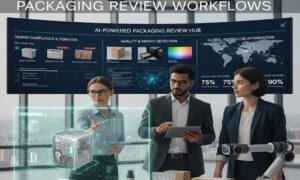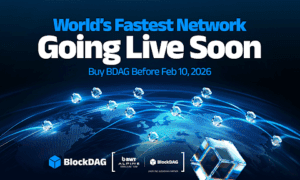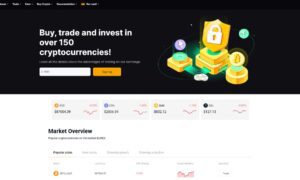Inventory is expensive, especially when you get it wrong.
Overstocking leads to cash tied up in unsold products and higher storage fees. Stockouts frustrate customers, drain marketing ROI, and hand sales to your competitors. And often, both problems coexist: piles of the wrong inventory, none of the right one.
Traditional forecasting methods haven’t helped. Most companies still rely on spreadsheets, basic sales history, and gut instinct. These methods are rigid, slow to update, and disconnected from the real world, where sales trends change weekly, not yearly.
That’s where AI comes in.
AI-powered forecasting tools now allow even mid-sized brands to predict demand more accurately by analyzing live data across sales channels, ad platforms, and supply chain systems. This article breaks down how it works, what it fixes, and why it’s quickly becoming a core pillar of operational success.
Traditional Forecasting vs. AI-Based Forecasting
The traditional forecasting approach worked when demand patterns were stable. But eCommerce changed that.
Traditional Forecasting:
- Static: Often based on last year’s sales, sometimes adjusted for seasonality.
- Siloed: Doesn’t consider marketing campaigns, shipping delays, or weather changes.
- Slow: Forecasts are reviewed monthly or quarterly, with little room for agility.
This approach breaks down when you’re selling across Shopify, Amazon, and retail, with influencer spikes and unexpected supplier delays.
AI-Based Forecasting:
- Dynamic: Ingests live data across platforms—sales, advertising, logistics, and customer behavior.
- Integrated: Knows when a promotion is launching or when a shipment is stuck at port.
- Automated: Forecasts update automatically, giving you fresh reorder points daily.
In short: AI doesn’t just look back—it adjusts to what’s happening now. It’s especially critical for companies selling in fast-moving, multi-channel environments, where even a 48-hour delay in stock decisions can mean missed revenue.
How AI Forecasting Actually Works
Behind the buzzwords, AI forecasting has a clear structure:
- Data Ingestion Layer
Tools pull in data from systems you already use—Shopify, Amazon, ERP software from CrossBridge, CRM platforms, and even ad dashboards.
- Machine Learning Modeling
These systems look for trends: purchasing cycles, product-specific seasonality, reactions to promotions, and more. Over time, the model “learns” how your customers behave—and adjusts as new data flows in.
It also spots anomalies: maybe a single influencer shoutout drove 4x sales. Or maybe a shipping delay tanked your conversion rate.
- Forecasting Output
The tool then outputs:
- Reorder suggestions per SKU
- Demand ranges based on confidence intervals
- Scenario testing (e.g., “What happens to demand if we offer 20% off next month?”)
The best part: you don’t need a data science team to make this work. Most AI forecasting tools are SaaS-based and integrate with your existing setup in weeks—not months.
Core Benefits to the Supply Chain
1. Improved Stock Accuracy
AI helps you hold the right inventory—not too much, not too little.
- Avoid lost sales from out-of-stock items.
- Reduce the risk of aging inventory that ends up on clearance racks.
- Sync stock levels across multiple warehouses, sales channels, and even regions.
2. Shorter Lead Times
When the system detects early signs of increased demand, it helps you act faster.
- AI triggers reorders before you hit critical low points.
- Supplier communications improve with more accurate forecasts.
- Dynamic alerts warn your team when a SKU behaves unexpectedly.
3. Reduced Working Capital Strain
Inventory is one of the largest drains on your cash.
- AI keeps unnecessary inventory out of your system.
- That frees up funds to invest in customer acquisition, new product development, or infrastructure upgrades.
- Especially for growing companies, this can be the difference between smooth scaling and a cash crunch.
4. Synchronized Sales & Ops
Marketing teams often launch campaigns before Ops can catch up. AI forecasting changes that.
- Forecasts take into account future promotions, launches, and seasonality.
- You avoid scrambling during influencer drops or peak sales periods.
- Everyone—from sales to logistics—works off the same real-time picture.
Real-World Application: A Case Snapshot
A mid-sized skincare brand was consistently underperforming during major sales events. Despite strong demand, they’d run out of key SKUs within days, while slow-moving items filled their warehouse.
They switched from spreadsheet-based forecasting to an AI-driven SaaS tool that integrated directly with their ERP and Shopify store. Within one quarter:
- Stockouts dropped by 30%
- Overstock levels fell by 15%
- Customer satisfaction (measured via post-purchase surveys) improved significantly
They didn’t build custom software. They just connected a forecasting platform that could handle the heavy lifting—and started making smarter decisions based on live data.
Adoption Challenges and How to Overcome Them
Not every team adopts AI forecasting easily. Common friction points include:
- Change Resistance: Operations teams may trust their spreadsheets more than a machine. Start with a pilot in a single product line or warehouse to build confidence.
- Data Quality Concerns: AI is only as good as the data it’s fed. Clean integration with your ERP and sales platforms is key—but most modern tools help you assess and improve your data hygiene.
- Budget Worries: Full implementation across multiple facilities might sound expensive, but the smarter path is to start small. Many platforms offer tiered plans or proof-of-concept programs.
Above all, leadership alignment is critical. Forecasting isn’t a cost—it’s an enabler of efficiency, growth, and customer trust.
The Future: Forecasting as a Strategic Advantage
AI forecasting is becoming more than an operations tool—it’s informing high-level decisions:
- Marketing: Budget can be tied to likely inventory availability and performance.
- Finance: Capital allocation improves when stock turnover is more predictable.
- Expansion: Planning new warehouses or sales channels becomes more data-driven.
For companies operating in complex supply chains—especially those relying on EDI-compliant systems to connect with retailers—this capability is quickly becoming a necessity, not a luxury.
In 2025, the best-performing supply chains won’t be defined by size—they’ll be defined by intelligence. AI doesn’t replace your team. It frees them to work smarter, faster, and with fewer costly surprises.



































